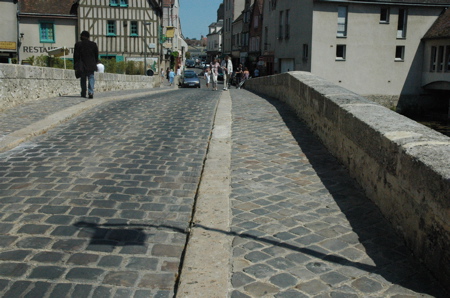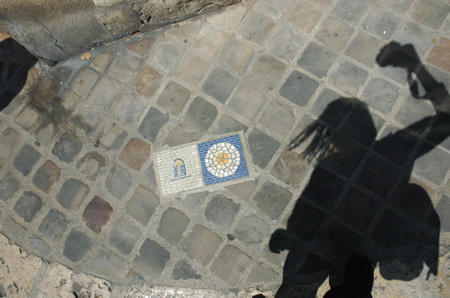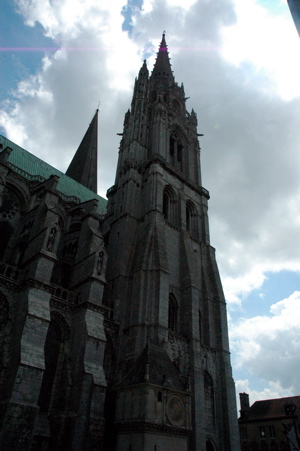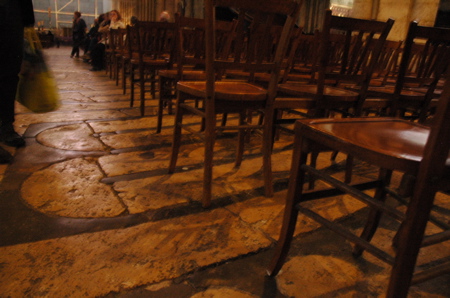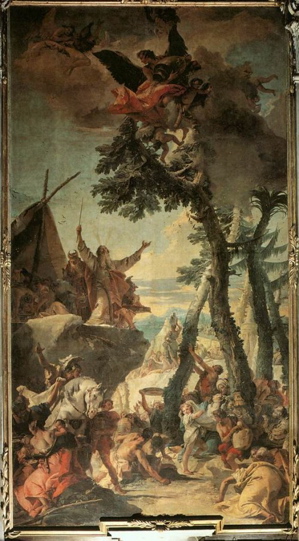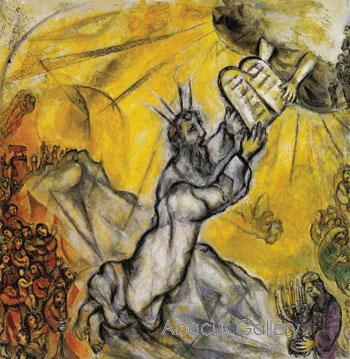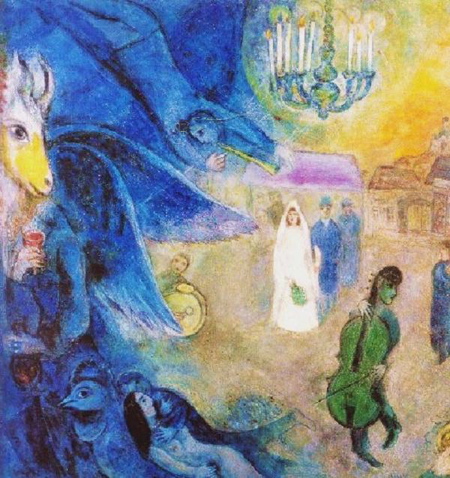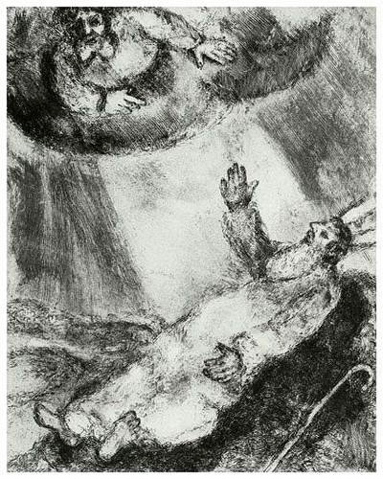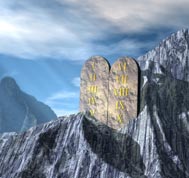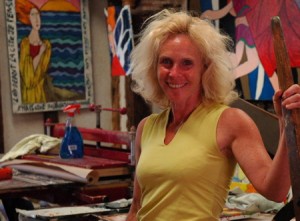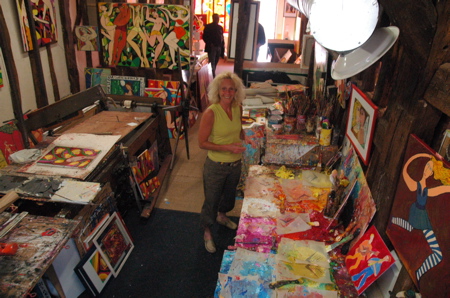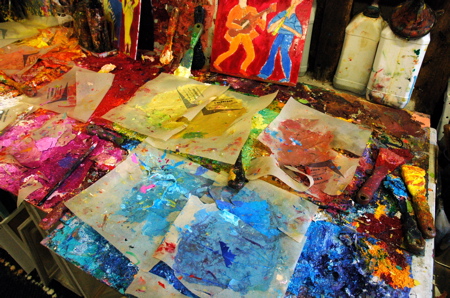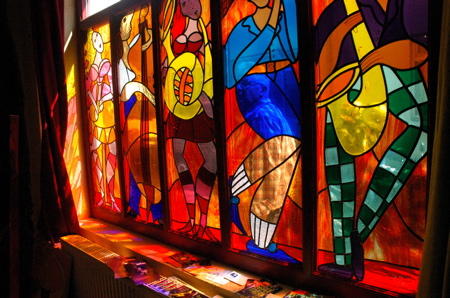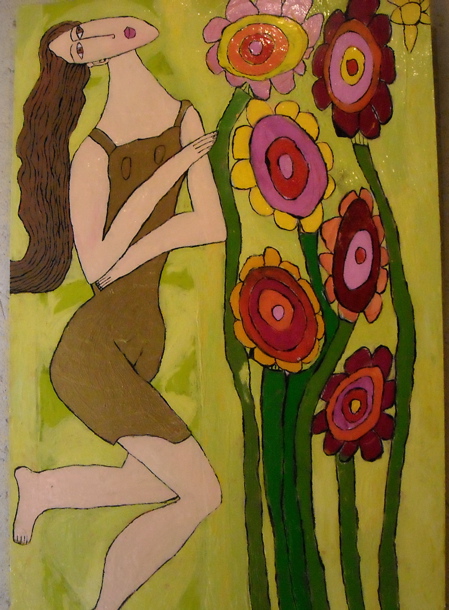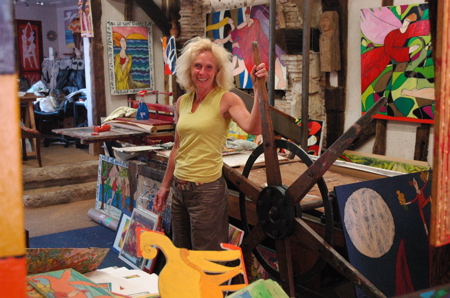19
Jun
The meaning of spitting among the Luba people of Congo.
17
Jun
From Paris, I take the train to Chartres. The train is like a time machine. The moment I get out of the station, I step back in time to the Middle Ages.
Cyprian Josson and his wife Martine come to pick me up. Soon the car wobbles slowly on the cobblestone-paved street. I feel like I have landed in a different universe. We get out of the car and start walking through ancient paths.
Chartres is old and magical in a very different way from Paris. I can’t figure out why Chartres feels so differently.
Maybe it’s the time period.
“It’s a charming medieval village,” said Leslie, an American friend of Cyprian, who has been living in Chartres for the past 21 years. ”The cathedral [of Chartres] was built on an old druid site that has strong vibrations for women.”
Maybe it’s the cathedral and its grotto underneath that makes this town so unique.
The cathedral rises like a link between the earth and the sky. Through times, it was a place of pilgrimage in France, where Christians came to see the Black Virgin, a statue made by Druids before the birth of Jesus. The energy current _ in the Druidic cave below _ is said to awaken a person to the spiritual life in her.
Now I understand why during my visit of the cathedral I saw a woman walking around with her hands raised as if to feel and be in tune with the energy of the place.
I admit there is a good feeling in that church; it is quiet and dark and cool. At one point, I decide to sit down in a corner and meditate.
La cathédrale de Chartres has a famous labyrinth, etched in its stone floor. I have been wanting to walk it for years.
There are chairs all over it for Sunday mass.
I learn that once a year, usually on June 21st, they remove the chairs so that people can walk the labyrinth. I make a mental note of the date.
I will be back in Chartres the weekend of June 25th to attend the Gospel Festival of Chartres, Cyprian is organizing.
Maybe I will walk the labyrinth too.
16
Jun
Watch the VIDEO of Kabuika at the National Library in Paris
I went to la Bibliothèque Nationale de France (François Mitterrand). It was the only library in Paris where I could find books on the Luba culture. I discovered books of the 1960s on the Baluba. What a treasure!
The library is built for the conservation of books, films, audio recordings, etc. People are more like an afterthought. I am exaggerating, but only a little. The place has a clean, industrial feel to it.
La Bibliothèque Nationale holds an amazing collections of books and other items published and produced in France. Its aim is to preserve the collective memories of the country.
This is a role model for Congo. We really need to conserve our rich heritage.
If you want to die quickly, sleep with a Luba woman.
Wait a minute! I know what you’re thinking.
You must be saying, “a few weeks ago you wrote about how to marry a Luba woman (see story); now you’re telling us you can die if you sleep with her?”
Not exactly. If you have given a dowry for her, you are safe. If you have not, that’s when you die. Death is issued as a punishment for breaking the Luba law: sleeping with a woman you have no business sleeping with.
You might feel this is a bit harsh. However, one must understand the ramifications of such an act. In the traditional Luba society, when a woman sleeps with a man and that fellow does not marry her, she loses the chance of ever getting married. No marriage means no dowry received. Her whole family might crumble (see Book of Dowry).
So you can see why the woman’s family would want to kill you. You get the choice of two types of death, depending on the family you have offended.
Some have a tendency to kill by poison. In my village, I think it would be by lightning. We think it’s more precise. The outraged family would wait until you are alone in the house, then will send lightning that will burn down the house with you in it.
At the National Library of France yesterday, I found a kasala, a Luba song that tells the story of a man who slept with a woman and was punished by lightning. The man was named Kayembe and the song was written from his perspective. My guess is Kayembe did not survive the lightning strike and the song was post-mortem:
Kayembe A.K.A. “The-Vagina.”
My brothers and sisters, tell me:
What did I do that was so serious?
I did not stab G-d
I did not even insult Him.
All I did was admire beauty!
13
Jun
I’m Kabuika.
Although I have a typical Luba name, it is considered unusual in some parts of the world. My name is always an ice breaker when I meet new people.
Such was the case when I ran into Yves, a French man, standing outside of the cathedral in Chartres, France.
I pulled out my iPad and filmed our meeting. Here is a loose translation of our conversation in the video:
Yves: “What’s your name? Meredith?”
Me: “Kabuika”
Yves: “Kabuika? What a name! What a name!
… And what do you do in Chicago?”
Me: “I am an independent journalist. Here in France, I’m filming, interviewing, photographing tons of people. Then I put all the stories on my blog. And people get to follow what I’m doing.”
“That’s incredible!”
Me: “I will put you on YouTube.”
13
Jun
My adventures in Chartres, France continue.
My friend Cyprian Josson and I visit la Cathédrale de Chartres.
By the beautiful biblical statues, we meet a man who decides to sing to me, “La Vie en Rose.”
The portrait of France: romance and beret.
12
Jun
This week, with the Jewish holidays, I spent a lot of time at the synagogue in Paris. By praying and chanting psalms, you get to a point where you transcend and understand life better.
(11:1) And the people complained…
The Torah passage on Shabbat was in the Book of Numbers, chapter 11.
When the people of Israel left Egypt, they soon started to cry out for food in the desert, so HaShem sent them food. Manna fell out of the sky for them.
But more complaints ensued as they quickly grew tired of manna, saying that things were better in Egypt. The Jewish people bemoaned, “Why did we come out of Egypt.”
“Oh that we had meat to eat! We remember the fish we ate in Egypt that cost nothing, the cucumbers, the melons, the leeks, the onions, and the garlic.” (11:4)
G-d got angry and sent them meat and more meat, meat for “a whole month, until it comes out at your nostrils and becomes loathsome to you.” (11:20)
The people of Israel back in those days made the error of thinking that eating meat will make them happy. They pursued happiness in consumption.
We make the same mistake today.
We tend to acquire material possessions, thinking they will create our happiness. But is happiness really in the latest car or smart phone? Today, we are living in a very materialistic society, yet all our property does not make us happy.
A very good friend of mine in Chicago got up one day, called her friends and gave away all her possessions. This was not a yard sale. Everything was free! For many people, it was like Christmas; they came and took the refrigerator, the TV, the computers, the whole living room set. Everything! When all was gone, my friend said, “Now I can live fully.”
Back at the synagogue, the rabbi explained the people of Israel in the desert did not realize that to lead a happy life, they needed to put themselves in it. They were the spices of their own life. So it was up to them (as it is up to us today) to be creative and make manna taste like fish, melons or chocolate if we want.
We are the most powerful ingredient in our life.
10
Jun
Shavuot is when we celebrate the giving of the Torah on Mount Sinai. I looked forward to celebrating it in Paris the traditional way: staying up all night to learn Torah.
In my Conservative synagogue in Paris, the overnight study began at 8:15 pm. The theme of the discussion was “Does G-d have a body?”
I wondered how this topic would last all night since it seemed to me an open and shut case: Jews are very much against idolatry, so we avoid any corporal representation of G-d.
Speakers were scheduled to examine the various representation and descriptions of G-d in not only Jewish texts, but also historic and literary ones.
The first speaker was a historian of ideas, Mireille Hadas Lebel. She took us through books rarely read among Jews, to see how G-d was described in texts of different time periods. She read excerpts from the book of Daniel (of the 6th Century), which is included in the Writings and not in the books of Prophets. She also read the book of Enoch, a Jewish text no longer used in Judaism, but still very much central to the Ethiopian Orthodox Christians.
And then, to the surprise of the audience, the historian pulled out the New Testament:
“If you want to know Judaism in the 1st Century, read the New Testament,” she explained.
Through all the texts Mrs. Lebel read, we clearly saw a tendency to ascribe a human form to G-d:
_ Giving Him a voice:
“ Adam answered (after having disobeyed), “I heard You in the garden, and I was afraid because I was naked; so I hid.” Genesis 3:10
_ Using a hand or even angels with wings to represent G-d, as was often seen in the works of the Jewish painter, Marc Chagall.
The French Writer and Philosopher Voltaire was right when he said, “If triangles made a god, they would give him three sides.”
At coffee break at 9:45 p.m., we all crowded around the hot drinks and cakes and cookies. The night was young and we needed to take in as much energy as possible.
In the next talks, more discussions of G-d’s representation in Jewish and Israeli art seemed to reinforce these anthropomorphic paintings of HaShem.
Was the hand in Chagall’s painting representing a tiny piece of the unlimitedness of the Divine Being or was it limiting Him into a human form?
People who were present at the foot of Mount Sinai were lucky: they did not have to wonder about G-d’s form. True, they did not see Him, but they certainly felt Him that day through the thick clouds surrounding the mount to shield them.
“But,” He said. “You cannot see My face, for no one may see Me and live.”
Exodus 33:20
One person did see G-d: Moses.
He was the only one who penetrated the clouds and saw HaShem. Maybe that is why, in his painting of the dying Moses, Chagall paints G-d in a human form.
Once again, Voltaire.
“If G-d created us in his own image, we have more than reciprocated,” the writer said.
The study group continued to explore the shape of G-d late into the night. The second coffee break at 11:30pm was not as effective. My eye lids were getting heavier and heavier past midnight.
The last speaker was Rabbi Rivon Krygier. He said if there was one thing and one thing only we should remember from the whole evening of learning was to read Benjamin D. Sommer’s book, “The Bodies of G-d and the World of Ancient Israel.”
Our rabbi was truly a good speaker, engaging us into the discussion.
“Wake up!” He suddenly shouted, waking me up with a jolt. I sure hope I was not the only one in the audience, fading away.
I vaguely remembered him saying that if we wanted to know what G-d felt and looked like on top of Mount Sinai, we simply had to google “volcan de Chili.”
The clouds shielding G-d from the people below must have looked like this volcano eruption.
By 1:30 a.m., my brother came to pick me up. I stumbled out of the synagogue, as the rabbi rightly said, that I was on my way to sink into my own clouds.
7
Jun
Expect more stories of my French travels towards the end of the Jewish holiday of Shavuot, on Friday.
Chag Sameach and Happy Holiday!
Kabuika
“I came here when I was 19,” Leslie Xuereb Amiel said. “I thought I would be here for a couple of months and now I’m here for 30 years.”
Leslie is from New York City. She came to Paris to study art and art history for a few months. She fell in love with a viola player, traveled with him, stayed, painted and ended up moving to Chartres, France. Since she is American, a friend took me to see Leslie in her studio.
Everywhere I looked, I saw bright colors. Her studio was cool and colorful, a sharp contrast from the intense sun outside.
“I create this imaginary world as a kind of a refuge for myself, because I’m not very happy with the world [outside] as it is,” Leslie said. “[My art] has helped me run away from the real world.”
The art studio is certainly a haven. It feels good to be in it. Leslie has painted stain glass on her windows to create that feeling. The stain glass protects from the outside world and at the same time makes the studio very lively. She hopes that her happy art brightens others too, ”If I can give a bit of energy to others, that will be great.”
Leslie has been painting women with flowers as big as the women. Her art portrays “the joy of simple things, of flowers, of the sun, of the earth … the interactions between [them].”
Her paintings show women bouncing up to be part of the trees, the moon, and the air.
“All your characters are women,” I pointed out to her.
“Yeah, mostly. There are some angels here and there.” She replied. “Every now and then there is a guy; he’s more like an accessory,” she burst out laughing. “It says a lot about me.”
Leslie now has 3 children and her whole life is in Europe.
“How could you possibly imagine that when you go abroad to study, you’re going to stay for your life?” exclaimed the artist, who has been in France for almost 30 years. “I think when you make a decision, you absolutely don’t know where it will lead to.”
Her decision to come to France led Leslie to a life centered around her art.
“I don’t own a house… I rent an apartment, but I am buying a studio, [because] I need to own a place to create in.”
“It’s kind of a bit backward,” she added with a shrug. “Besides the children, everything personal goes into my brushes and paints. I don’t own jewelries. This is it!” She said spreading her hands out to show her studio.
From her life in France, Leslie realized the most important thing is ” to keep on the path of creation all the way, no matter what happens. The ultimate goal is to flourish.”


